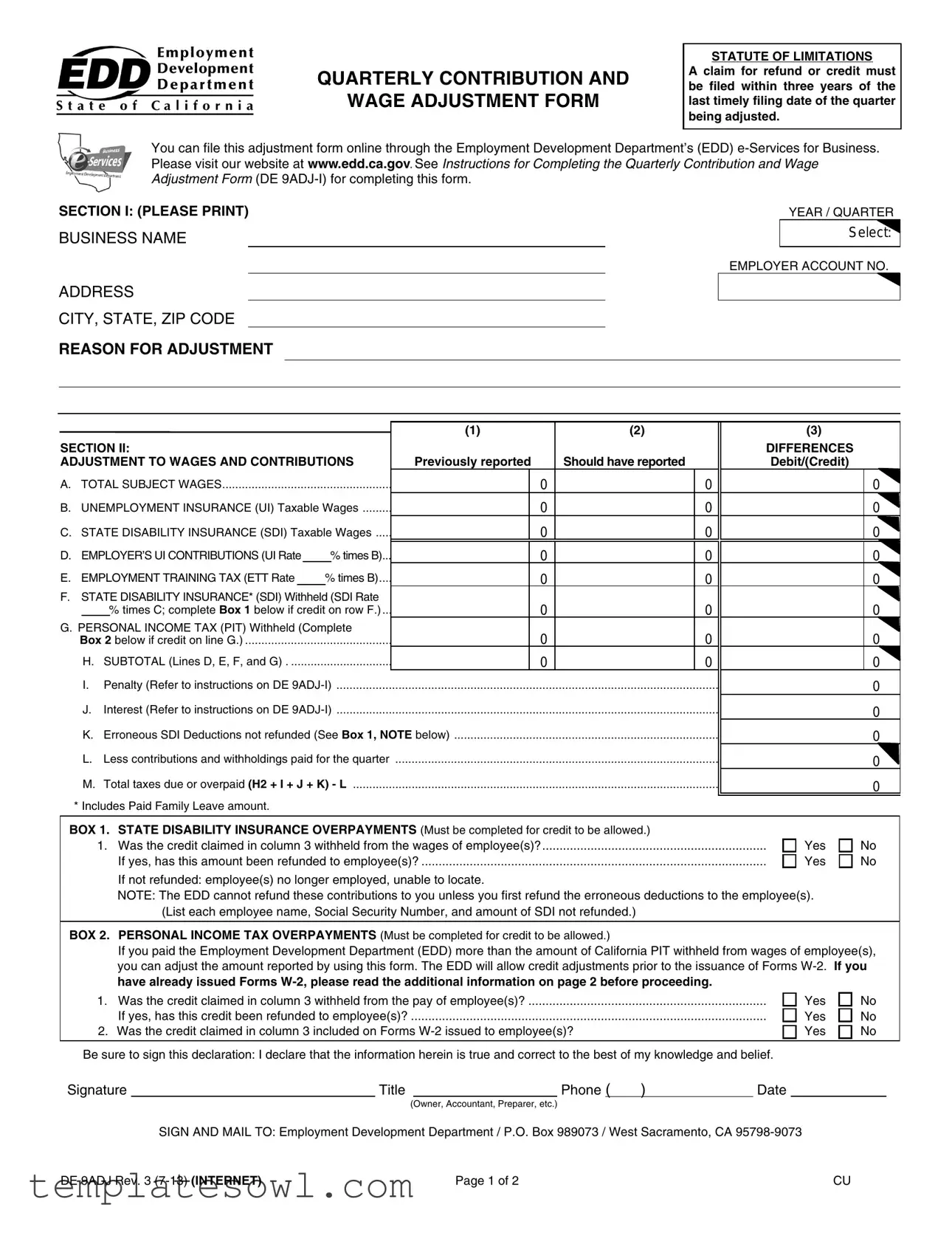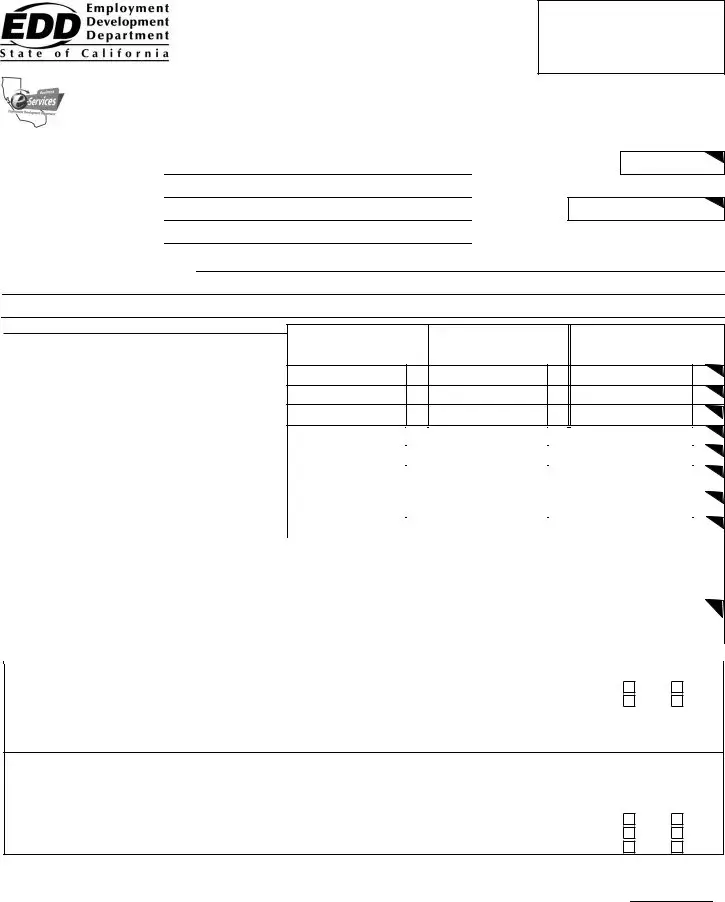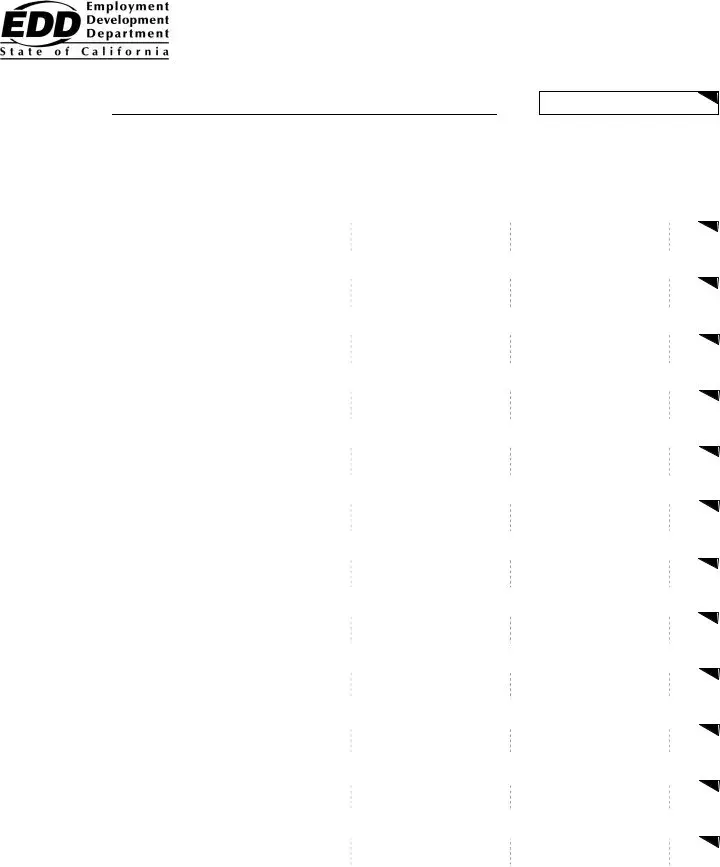What is the purpose of the DE 9Adj form?
The DE 9Adj form is used to adjust previously reported wages and contributions for California employers. This includes corrections to the amounts of Unemployment Insurance, State Disability Insurance, and Personal Income Tax withheld from employee wages. Accurate adjustments are crucial for ensuring compliance with state laws and for rectifying any overpayments or underpayments made in previous quarters.
How long do I have to file a claim for a refund or credit?
You must file a claim for a refund or credit within three years from the last timely filing date of the quarter being adjusted. This statute of limitations is strictly enforced, so it’s important to act promptly if you believe an adjustment is necessary.
How do I complete the DE 9Adj form?
To fill out the DE 9Adj form, start by entering your business name, employer account number, and the year/quarter for the adjustments. Next, provide the reason for the adjustment in Section I. In Sections II and III, you will input the previously reported amounts and the amounts that should have been reported. Refer to the detailed instructions provided in the “Instructions for Completing the Quarterly Contribution and Wage Adjustment Form (DE 9ADJ-I)” for guidance on each step.
Can I file the DE 9Adj form online?
Yes, you can file the DE 9Adj form online through the Employment Development Department’s (EDD) e-Services for Business. This is a convenient way to submit your adjustments without the need for mailing a physical form.
What happens if I do not refund erroneous deductions to employees before filing the DE 9Adj form?
The EDD cannot refund overpaid State Disability Insurance contributions to you unless you first refund those erroneous deductions to the affected employees. This ensures that employees receive the funds they are entitled to before any credits can be processed on your end. Make sure to resolve these issues prior to submitting the form.
What is the significance of Boxes 1 and 2 on the form?
Boxes 1 and 2 are crucial for claiming credits for overpaid State Disability Insurance and Personal Income Tax. Completing these boxes accurately allows you to adjust any excess amounts that were withheld from employee wages. If these credits are applicable, complete the box to ensure the adjustments are recognized.
Where should I send the completed DE 9Adj form?
After completing the form, mail it to the Employment Development Department at P.O. Box 989073, West Sacramento, CA 95798-9073. Ensure that you sign the form, as it is a declaration of the accuracy of the information provided.


